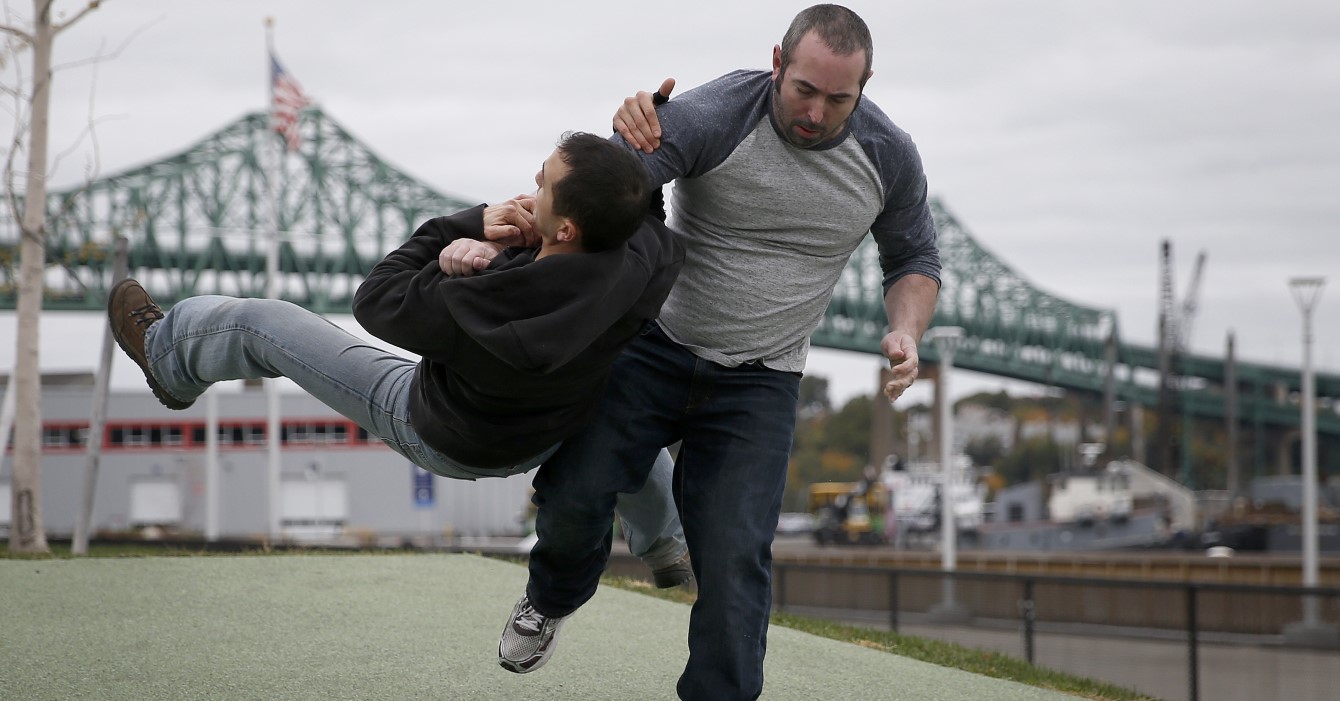School Address
165 (Unit E) New Boston Street
Woburn MA 01801
Many fights move very quickly from a striking to a grappling phase e.g., untrained individuals who engage in physical confrontations, often close distance very quickly, as they throw punches etc. Whilst it may be optimal to manage and control range, in order to help facilitate a disengagement opportunity, the reality may be that an aggressor closes distance too fast and/or there isn’t the space and room to do this (due to the nature of the environment e.g., furniture, objects, and people etc.). This means that you may find yourself in some form of clinch, and having to grapple with the other person. This doesn’t necessarily mean you can’t strike and punch from such positions but rather that it can be hard to do so effectively. Having both grappling skills, knowledge, and techniques, will make you a more effective fighter in this dimension of the conflict, especially if you are dealing with somebody who has a grappling and/or wrestling background.

At the higher levels of Krav Maga, practitioners are taught how to deal with others who have various martial arts skills and abilities e.g., different militaries use different martial arts as the backbone of their unarmed programs, and so as a military system it is necessary for Krav Maga to have solutions that can deal with these types of art – whilst it is unlikely for a civilian to have to deal with head high kicks (unless the environment allows for somebody to kick high e.g., they are on a higher level, such as on a higher step of a stair etc.), if a member of the IDF is dealing with a military that uses Tae-Kwon-Do as the basis for its unarmed fighting approach, this may not be the case. This means that Krav Maga practitioners to be complete fighters need to know how to deal with other trained fighters, from other systems and martial arts, including those that employ grappling and wrestling, such as Judo and Sambo.
When Krav Maga entered the civilian world - when Imi Lichtenfeld left the IDF – the system was taught and graded alongside a Judo syllabus, as initially the Wingate Institute (which regulates all sports in Israel) didn’t yet recognize Krav Maga as a martial art, and therefore any grades and belts awarded wouldn’t be recognized either. This meant that those training in Krav Maga, also were exposed to a complete Judo syllabus. This tradition is continued within the Krav Maga Yashir system, not for the sake of tradition but because Judo, is a great method for allowing practitioners to learn and develop grappling skills, which allows them to have the fundamental skills to deal with those, who have similar skills, and know similar techniques and methods etc.
Certain systems such as Boxing and Judo, are extremely linear, in that they exclude certain things (Boxing excludes grappling, Judo excludes striking etc.) in order to focus on, and develop specific and particular skills. Whilst Krav Maga uses primarily striking/combative solutions to deal with threats and attacks, in some systems the grappling component is under-trained. In order to be a complete and effective fighter, grappling, including the use of throws and takedowns needs to be trained and developed.